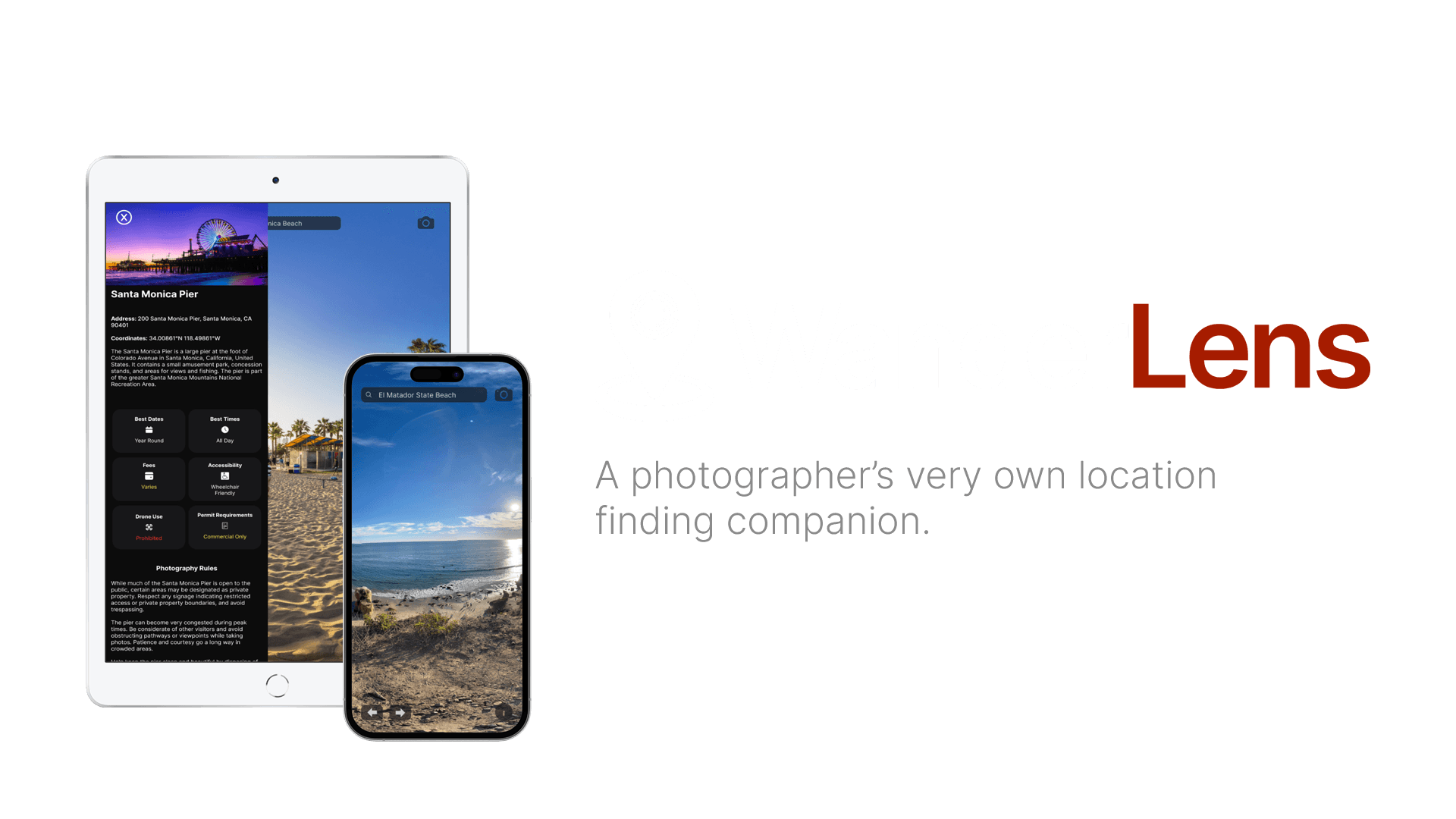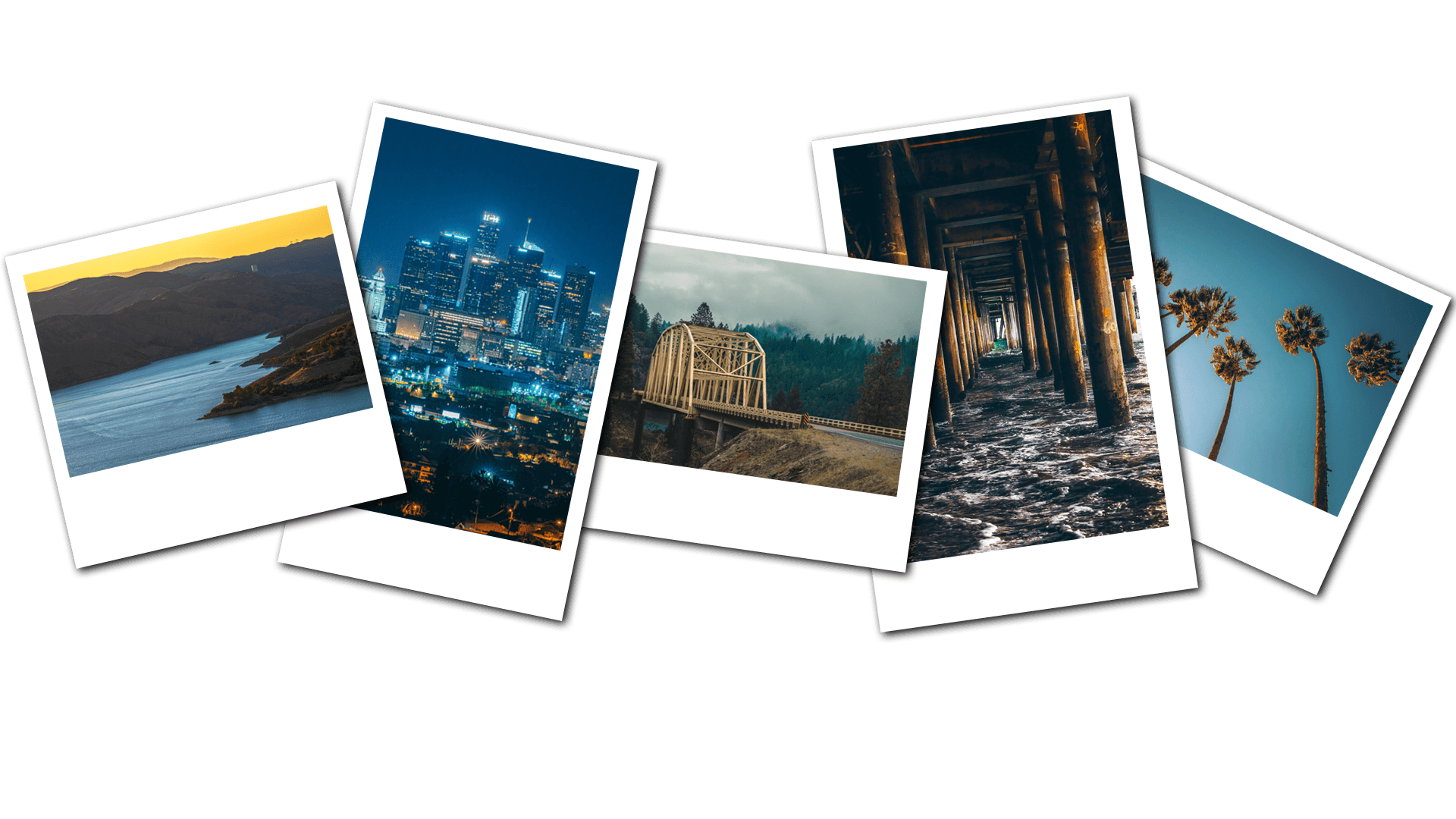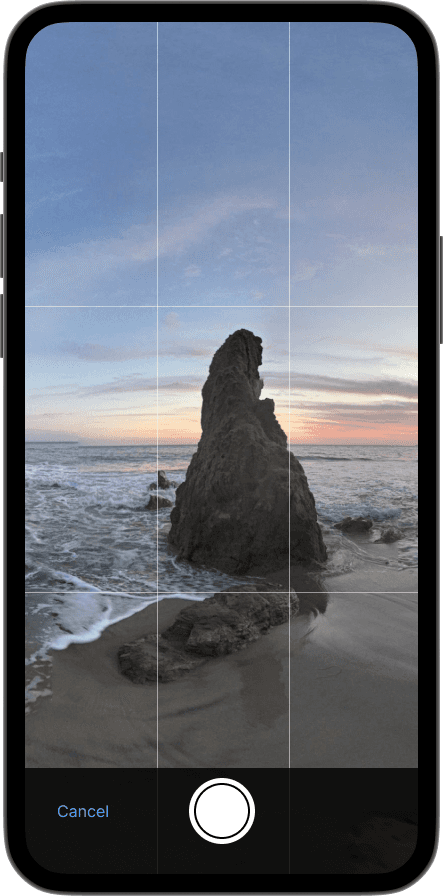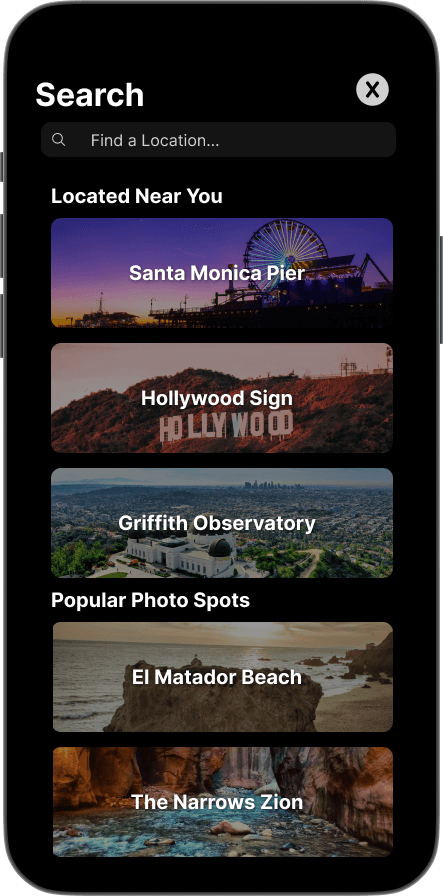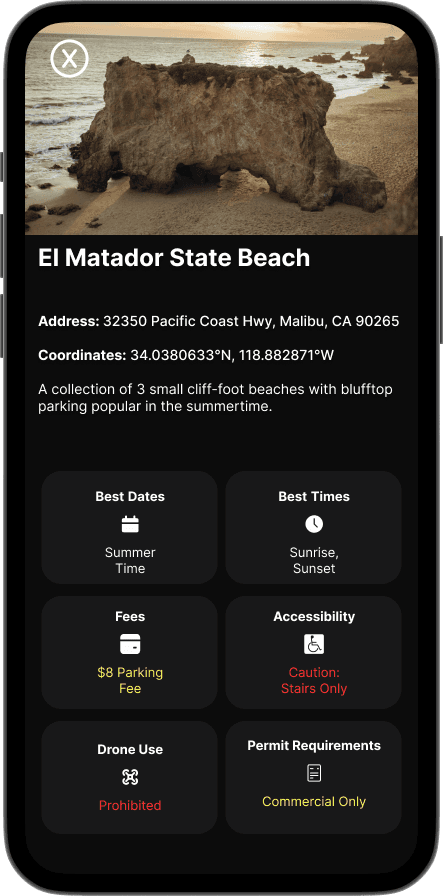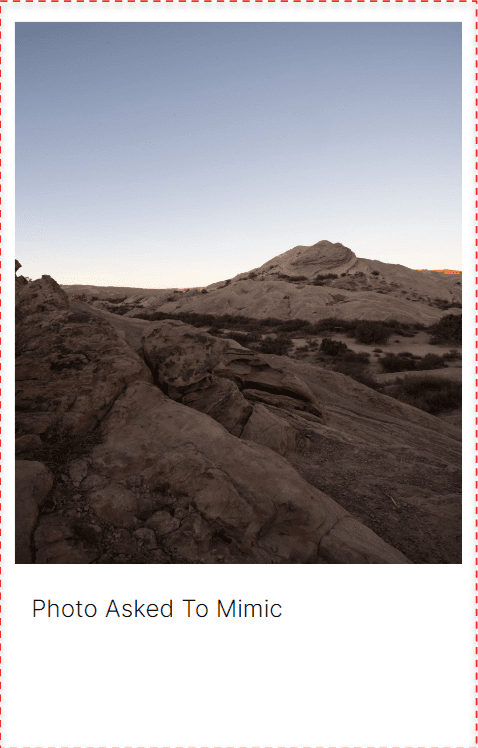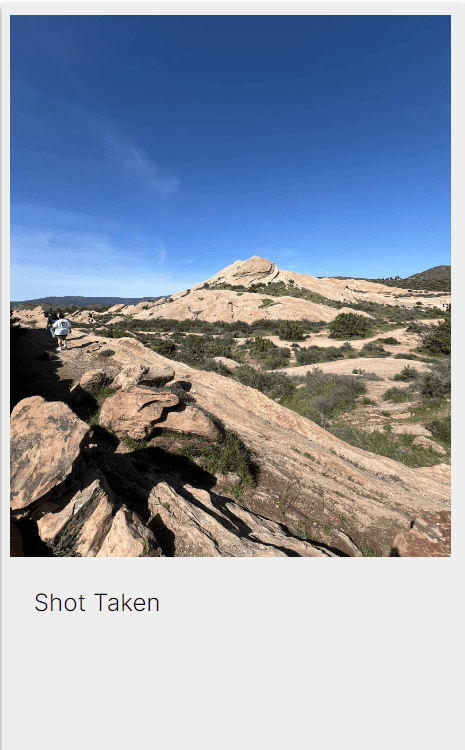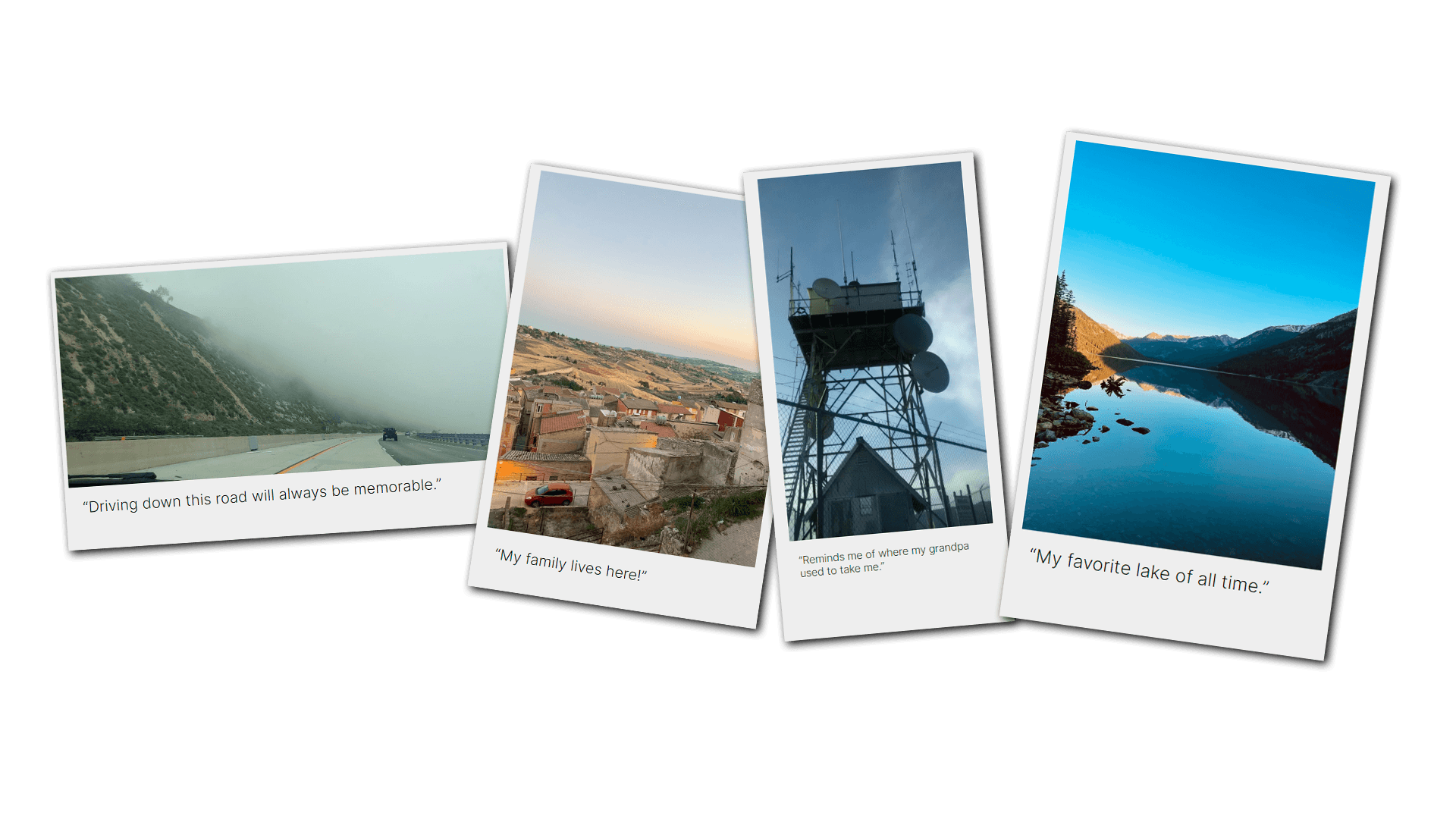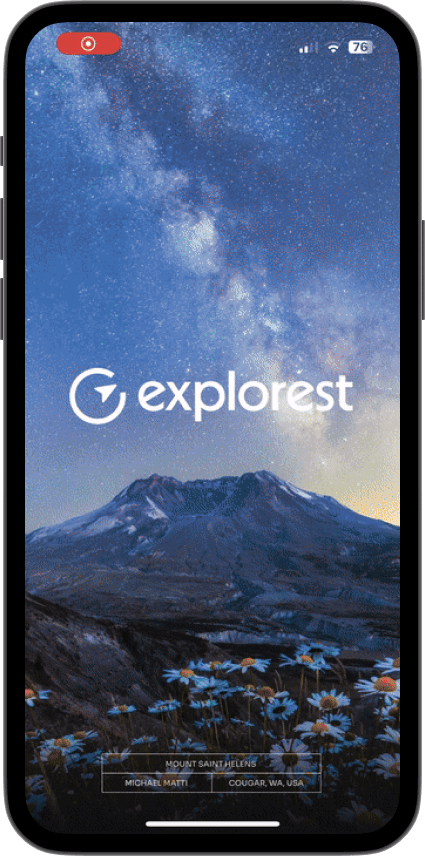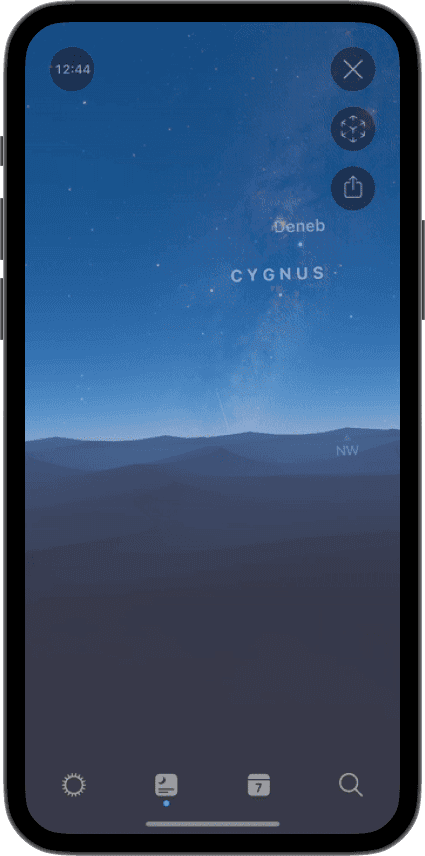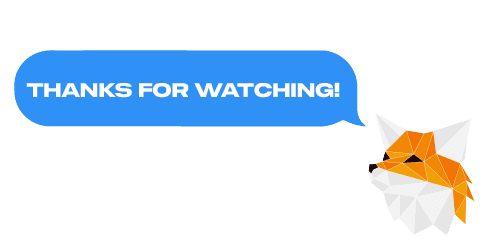Time:
16 Weeks
Role:
UX/UI Designer
Tools:
Figma, Adobe Photoshop, Illustrator, Orbix360
Overview
With my last year at my interaction design program, I finally had the opportunity to create a project that feels close to what I love doing. For my senior capstone, I present WanderLens. A mobile app and VR experience programmed to assist photographers in location finding for their next photoshoot. This tool reintroduces the way photographers and explorers scout for new exciting locations to venture at.
Impact
I was given the opportunity to make an exhibit to showcase WanderLens. With a budget of $1000, I effectively created an immersive exhibit that showcases both my photography work and WanderLens as a full-working prototype. Visitors were enthused and excited to see my showcase. More notably, people enjoyed using the VR prototype where they had the ability to immerse themselves right into a location of their choice.
Background
For the past 7 years I have practiced professional photography in my free time. I have taken on numerous photoshoots with people involving automotive, wedding, and event photography. It is my duty to make sure my clients receive the best photos for their memories. With that being said, location finding has been a number one priority for me before I go out taking pictures. My photo journeys have led me to exploring all around California, searching for points of interests that aren’t widely known. During this process, tons of travel information and research is needed before I venture out..
What is the issue?
You’re probably wondering, “what’s wrong with the current methods of finding locations to take pictures?” We have access to tons of resources that help us find great places to travel to such as Tripadvisor or Google Maps. As we know, these sites provide basic information and directions on how to get there. Yet, these tools often fail to accurately depict the exact appearance of a specific location. As a photographer, it's challenging to convey the envisioned scene without a comprehensive view of the entire space.
Here are the pain points.
I find myself diving into tons of reviews of what the authentic experience is like for photographers like me. I can’t tell you how many times I have traveled to a location only to realize the area forbids professional photography of any kind without a permit! This along with accessibility problems have been a common issue when finding the perfect place to take pictures at.
Visitors aren’t the only ones with travel issues, property owners also find themselves frustrated with miscommunication regarding what is allowed at specific locations. This unfortunately leads to trash and vandalism at sites. Ultimately, searching for locations to take pictures is still very difficult. With a lack of property knowledge beforehand, both visitors and property owners have a frustrating time.
To make this process easier, I am introducing a mobile app and VR experience called “WanderLens”, a new way to find and scope out photo-worthy locations dedicated for photographers.
An Immersive VR Experience
To emphasize visual perspective, users can explore a location in its entirety through 360-degree imaging using a VR headset. Unlike the mobile app, the VR experience offers users a highly realistic and precise representation of the scene. Complete with detailed visuals and immersive sound, making them feel as if they are truly there. This approach ensures users receive precise visual cues about the location which is what makes this feature so important.
All Information Needed In One Tool
Wanderlens also offers a range of information such as descriptions, weather, best time to be there, parking information, rules, and reviews which can be accessed on both the mobile app and the virtual reality experience. This eliminates the tedious task of searching for additional information online.
Panoramic View
Camera Mode
Location Selection
Information
UX Research
To justify the design decisions I have made with WanderLens, I gathered insights that helped me figure out what was most needed in my solution. I first went out to study how photographers find ideal locations.
Experiment 1: Learning From What Real Photographers do
In this experiment, I had a proficient photographer try to locate and recreate a specific photo along with giving them the liberty to find it however they choose. I asked the photographer to search throughout the valley and recreate the photo shown below. And after about an hour searching the valley, Based on his performance, it drew me to the conclusion that omnidirectional visuals would change the game.
Photographers Methods:
Compared sun positions from the photo,
Attempted to terrain match on Google Maps.
Painpoints He Found:
Area had too many terrain similarities
Not Enough varied perspectives
Experiment 2: Understanding Human behavior
In my second experiment, I delve into what makes a location unique. My findings revealed that people associate places with relationships and personal experiences. Some locations hold significance due to past events, which motivates people to visit less popular spots. With the right context and information provided, visitors showcase more respect for these destinations.
Explorest
Sky Guide
Competitive Analysis: Assessing What Already Exists
Finally, I revisited the topic of inspiration for other exploration apps like Explorest, which offers sought-after travel destination coordinates. This app has influenced the development of Wanderlens and how it appeals to photographers. Another app called Sky Guide, a star tracker app utilizing AR, has inspired Wanderlens' approach to making use of 360-degree panorama movement using the device’s compass.
Next Steps
Accessibility Features
For future steps, I’d like to dive into accessibility features implemented within the viewing space. I also envision insight pop ups that indicate a range of different information such as bathrooms, staircase access, danger zones, and more.
Community Features
I also want to explore more into the community aspect of the tool, and embed reviews and posts from what real people had to say at specific locations. Personal experiences and tips presented by other photographers can emphasize a sense of connectivity and security before journeying out to locations.
Self Reflection
Ultimately, I envision Wanderlens to be a great tool for photographers to better prepare for what’s to come before they head to their destination. This project has helped me understand what I wanted out of being a UX Designer. I realized that I thrive in projects that associate with topics that I resonate with. WanderLens was the perfect project for me to showcase my passion for both design and photography. I can't wait to continue my journey as a designer and push myself further into areas that bring the best out of myself.
